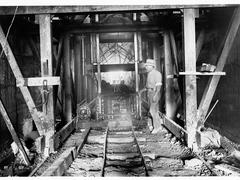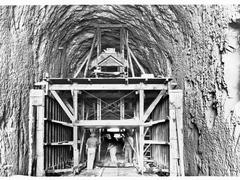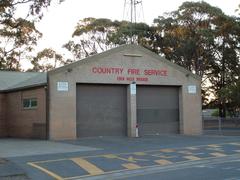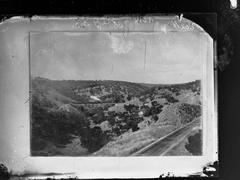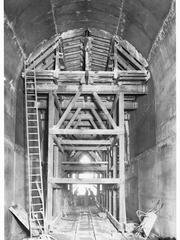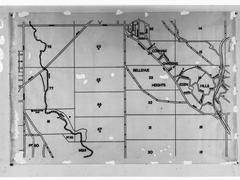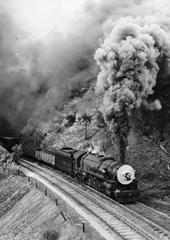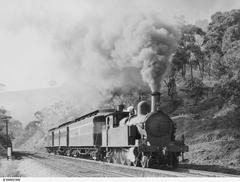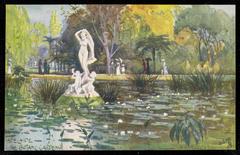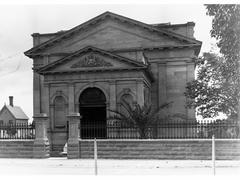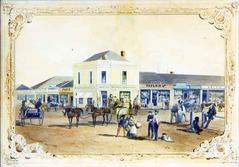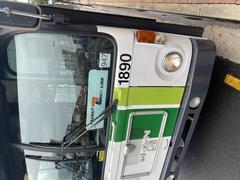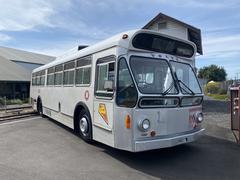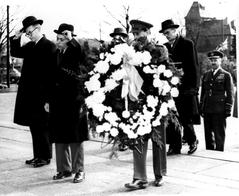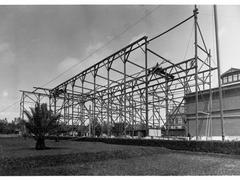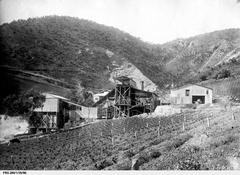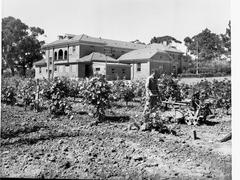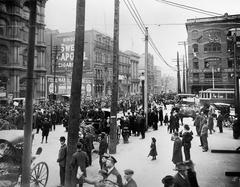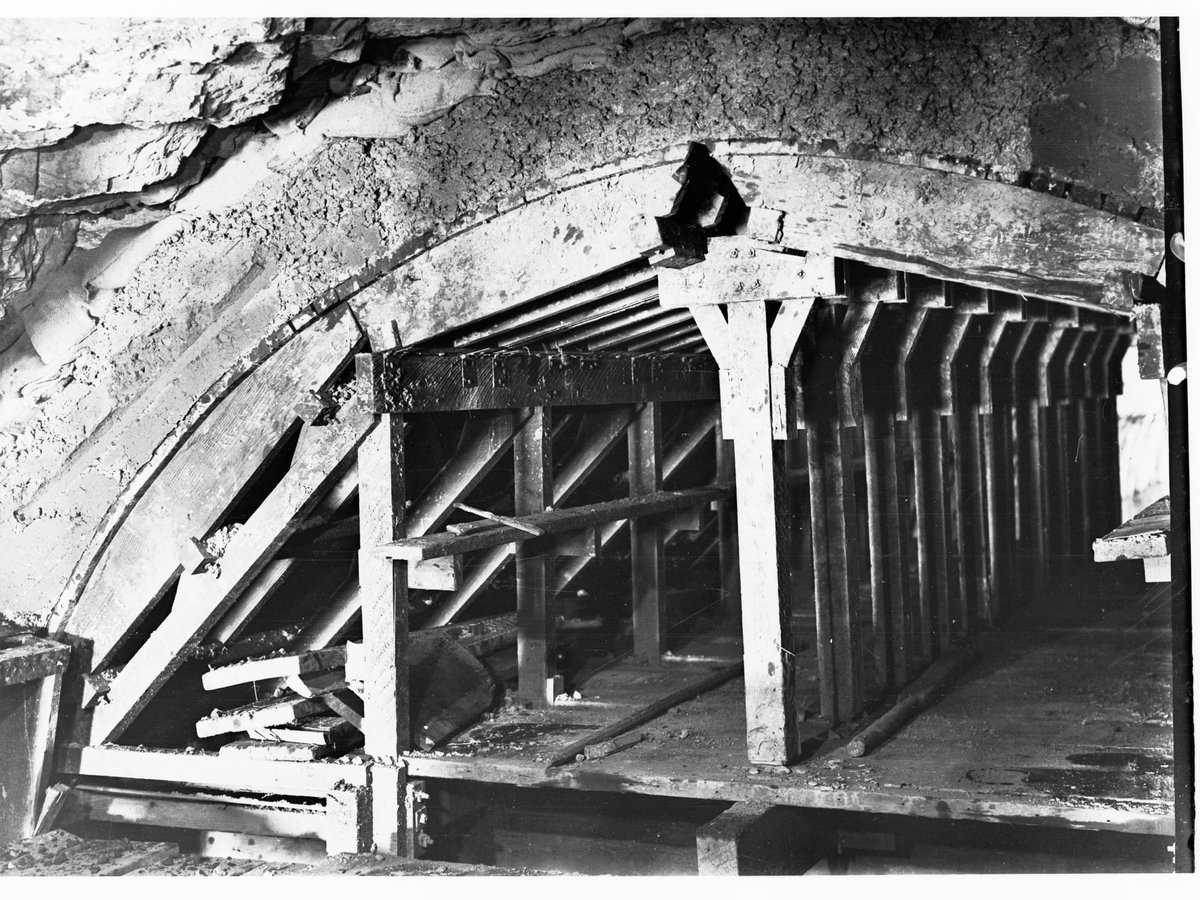
Comprehensive Guide to Visiting Watiparinga Reserve, Adelaide, Australia
Publication Date: 01/08/2024
Introduction: Discover Watiparinga Reserve
Nestled in the picturesque Adelaide Hills, Watiparinga Reserve is a sanctuary that seamlessly blends rich history with ecological significance. This hidden gem, located in Adelaide, South Australia, offers visitors a unique opportunity to explore a landscape that has been meticulously preserved and restored over the years. The reserve’s name, ‘Watiparinga,’ originates from the Kaurna language, meaning ‘plenty of water’ or ‘middle creek,’ reflecting the area’s deep-rooted Indigenous heritage (Blackwood Action Group). Watiparinga Reserve spans approximately 32 hectares and is characterized by steeply wooded slopes, diverse flora and fauna, and significant historical features such as the original 1880s Adelaide to Melbourne railway tunnel. This guide aims to provide a comprehensive overview of Watiparinga Reserve, covering its history, visiting hours, ticket information, nearby attractions, and practical tips to make the most of your visit. Whether you’re a nature enthusiast, history buff, or seeking a peaceful retreat, Watiparinga Reserve offers something for everyone.
Table of Contents
- Introduction
- History and Significance
- Conservation Efforts and Management
- Recognition and Awards
- Ecological Significance
- Practical Visitor Information
- Nearby Attractions
- Special Events and Guided Tours
- Photographic Spots
- Community Involvement
- Future Prospects
- Conclusion
- FAQ
Explore Watiparinga Reserve: History, Visiting Hours, Tickets, and More
Explore Watiparinga Reserve: History, Visiting Hours, Tickets, and More
Introduction
Watiparinga Reserve is a hidden gem nestled in the Adelaide Hills, rich in history and ecological significance. This guide will explore the reserve’s history, practical visitor information, and tips on making the most of your visit. Discover why Watiparinga Reserve is a must-visit destination for nature enthusiasts and history buffs alike.
History and Significance
Indigenous Heritage
Watiparinga Reserve holds a significant place in the cultural landscape of the Kaurna people, the traditional custodians of the Adelaide Plains. The name ‘Watiparinga’ is one of the few Kaurna names used in the local area, meaning ‘plenty of water’ or ‘middle creek’ (Blackwood Action Group). The reserve is traversed by two major watercourses, Watiparinga and Walkers Creeks, which were likely vital sources of water and held symbolic importance for the Kaurna people. Along these creeks, several River Red Gums bear scars where traditional utensils were cut from the bark, indicating the area’s historical use by the Kaurna for crafting and sustenance.
Early European Settlement and Development
The European history of Watiparinga Reserve began in 1911 when Edwin Ashby, a notable ornithologist and conservationist, acquired the land as part of his Wittunga farming operation (Wikipedia). The Ashby family played a crucial role in the development and preservation of the area. Edwin’s daughter, Alison Marjorie Ashby, inherited Watiparinga and began planting thousands of Australian native plants in the late 1950s. Her vision was to create a green belt around Adelaide, and in 1957, she donated the land to the National Trust of South Australia with the stipulation that it be preserved in its natural state (Blackwood Action Group).
Conservation Efforts and Management
The conservation efforts at Watiparinga Reserve have been ongoing and multifaceted. In 1934, a devastating fire broke out in the area, burning hundreds of acres of orchards and bushland and threatening many homes (Blackwood Action Group). Subsequent fires, including a severe one in 1961, completely burnt out Watiparinga. These events underscored the need for effective land management and fire risk mitigation.
Since 1973, the Watiparinga Management Committee, comprising local residents, has undertaken extensive pest plant eradication and woodland regeneration projects. These efforts aim to manage fire risks and enhance the native biodiversity of the reserve. In 1993, a heritage agreement was signed with the South Australian government, dedicating the land to the conservation of its native flora and fauna (Blackwood Action Group).
Recognition and Awards
The dedication and hard work of the Ashby family and the local community have not gone unnoticed. Enid Lucy Robertson, Edwin Ashby’s granddaughter, began a project in the 1970s to regenerate the land. Her efforts culminated in the creation of the Watiparinga Reserve Management Plan in 1984, which became a prototype for other small to medium nature reserves in urban areas. For her contributions, she was awarded a Heritage Award in 1986 (Wikipedia).
In 1996, Watiparinga Reserve was added to the Register of the National Estate, recognizing its importance as a conservation area and its rich biodiversity (Wikipedia).
Ecological Significance
Watiparinga Reserve is a woodland ecosystem dominated by grey box trees, with an understorey of native grasses and wildflowers. The reserve spans approximately 32 hectares and features steeply wooded slopes bisected by the Adelaide to Melbourne railway line (Blackwood Action Group). This diverse habitat supports a wide range of fauna, including common birds such as noisy miners and honeyeaters, as well as less common species like grey currawongs and galahs. Notably, the reserve is home to vulnerable fauna, including yellow-tailed black cockatoos, Cunningham’s skinks, and bearded dragons.
Practical Visitor Information
Visiting Hours and Tickets
Watiparinga Reserve is open to visitors every day from dawn to dusk. There is no entry fee, making it an accessible destination for everyone. However, donations to support ongoing conservation efforts are always appreciated.
Travel Tips
The reserve offers various walking trails with entrances at Dale Road in Eden Hills and Gloucester Avenue in Belair. The Dale Road entrance is notable for its original National Trust Plaque, while the Gloucester Avenue entrance features gently sloping trails that follow a fire track through the O’Dea Reserve down to Pasadena. For those seeking a more challenging hike, steep winding tracks lead to the rail tunnels at the bottom of Watiparinga Gorge (Blackwood Action Group).
Nearby Attractions
While visiting Watiparinga Reserve, consider exploring nearby attractions such as Belair National Park, Wittunga Botanic Garden, and the historic Blackwood Forest Recreation Park. These sites offer additional opportunities for hiking, picnicking, and learning about the region’s natural and cultural heritage.
Special Events and Guided Tours
Watiparinga Reserve hosts special events throughout the year, including guided nature walks, birdwatching tours, and educational workshops. Check the reserve’s official website or local community boards for up-to-date information on upcoming events.
Photographic Spots
The reserve’s diverse flora and fauna, along with its scenic vistas, make it a paradise for photographers. Popular spots include the river red gums along the creeks, the steep slopes of the gorge, and the panoramic views from the higher trails. Early morning and late afternoon offer the best lighting conditions for capturing stunning images.
Community Involvement
The management and preservation of Watiparinga Reserve have always been community-driven. The Watiparinga Management Committee, composed of local residents, plays a crucial role in maintaining the reserve. Their efforts include organizing volunteer activities, such as planting native species, removing invasive plants, and conducting guided walks to educate the public about the reserve’s ecological and historical significance (Blackwood Action Group).
Future Prospects
Looking ahead, the future of Watiparinga Reserve appears promising. The ongoing commitment to conservation and community involvement ensures that the reserve will continue to thrive as a vital green space in the Adelaide Hills. Future plans may include expanding educational programs, enhancing walking trails, and furthering research on the reserve’s biodiversity.
Conclusion
In summary, Watiparinga Reserve is a testament to the successful collaboration between conservationists, local residents, and government bodies. Its rich history, ecological significance, and community-driven management make it a valuable asset to the Adelaide region. Whether you’re looking for a peaceful walk in nature, an educational outing, or a scenic spot for photography, Watiparinga Reserve has something to offer everyone.
FAQ
Q: What are the visiting hours for Watiparinga Reserve? A: Watiparinga Reserve is open every day from dawn to dusk.
Q: Is there an entry fee for Watiparinga Reserve? A: No, entry to Watiparinga Reserve is free, but donations are appreciated to support conservation efforts.
Q: Are guided tours available? A: Yes, Watiparinga Reserve offers guided tours and special events. Check the official website for more details.
Q: What are some nearby attractions? A: Nearby attractions include Belair National Park, Wittunga Botanic Garden, and Blackwood Forest Recreation Park.
Visit and Stay Up to Date
Stay updated with the latest news and events about Watiparinga Reserve by visiting the official website or following on social media. Download the mobile app Audiala for more information and to explore other related posts.
Visit Watiparinga Reserve: A Guide to Its Natural Beauty, Visiting Hours, and Tickets
Visit Watiparinga Reserve: A Guide to Its Natural Beauty, Visiting Hours, and Tickets
Introduction
Discover the hidden gem of Adelaide, Watiparinga Reserve, a sanctuary teeming with natural beauty and biodiversity. This guide will provide you with all the information you need to plan your visit, including visiting hours, ticket prices, nearby attractions, and more. Whether you’re a nature enthusiast, a history buff, or looking for a peaceful retreat, Watiparinga Reserve offers something for everyone.
History and Cultural Significance
Watiparinga Reserve, once part of the Ashby family’s Wittunga farm, was generously donated to the National Trust by Alison Ashby in 1957. This donation marked the beginning of a significant conservation effort that continues to this day. In 1996, the reserve was added to the Register of the National Estate, recognizing its cultural and ecological importance.
Flora
The reserve is a botanical treasure trove with over 170 indigenous plant species, including 50 of state or regional significance. The dominant vegetation type is the Grey Box (Eucalyptus microcarpa) grassy woodland, providing a unique and picturesque landscape. Thanks to the efforts of conservationist Alison Marjorie Ashby, the reserve boasts a rich variety of plants such as the Golden Wattle (Acacia pycnantha) and various species of Eucalyptus.
Fauna
Watiparinga Reserve is a haven for a variety of animal species, including 57 indigenous bird species. Birdwatchers can spot species like the Superb Fairy-wren, Red Wattlebird, and Rainbow Lorikeet. The reserve also provides essential habitat for mammals, reptiles, and insects, many of which are rare or threatened due to habitat loss.
Visitor Information
- Visiting Hours: Watiparinga Reserve is open daily from 8 AM to 6 PM.
- Tickets: Entry to the reserve is free of charge.
- Accessibility: The reserve has wheelchair-accessible paths and facilities to ensure everyone can enjoy its beauty.
- Nearby Attractions: After visiting the reserve, explore nearby attractions like the Wittunga Botanic Garden or the Belair National Park.
Travel Tips
- Plan Ahead: Check the weather forecast and dress appropriately. Bring plenty of water, especially during the summer.
- Respect the Environment: Stay on designated trails, avoid trampling vegetation, and take all your rubbish with you.
- Birdwatching: Bring binoculars and a bird guide to enhance your experience.
- Photography: The reserve offers numerous opportunities for stunning landscape and wildlife photography.
- Educational Resources: Utilize interpretive signs and available booklets to learn more about the reserve’s flora, fauna, and history.
Special Events and Guided Tours
Watiparinga Reserve occasionally hosts special events and guided tours. Check the National Trust of South Australia’s website for upcoming events and tour schedules.
Photographic Spots
Some of the best spots for photography include the Grey Box woodland, the remnants of the original 1880s Adelaide to Melbourne railway line, and areas rich in birdlife. Capture the beauty of the diverse plant and animal life that thrives in this protected environment.
Conservation Efforts
The National Trust of South Australia continues to manage the reserve, ensuring the protection and enhancement of its natural values. Recent support from the South Australian Native Vegetation Council’s Heritage Agreement Grants program has boosted conservation activities, including weed control and habitat restoration.
FAQ
- What are the visiting hours for Watiparinga Reserve? The reserve is open daily from 8 AM to 6 PM.
- Is there an entry fee for Watiparinga Reserve? No, entry to the reserve is free of charge.
- Are there guided tours available at Watiparinga Reserve? Yes, guided tours are available. Check the National Trust of South Australia’s website for schedules.
- What nearby attractions can I visit? Nearby attractions include Wittunga Botanic Garden and Belair National Park.
Call to Action
Plan your visit to Watiparinga Reserve today and immerse yourself in its natural beauty and rich biodiversity. For more information, download the Audiala mobile app, check out other related posts, and follow us on social media for updates and events.
Discover Watiparinga Reserve: Historical Significance, Visitor Tips, and Nearby Attractions in Adelaide
Nestled in the heart of Adelaide, Watiparinga Reserve is a sanctuary of natural beauty and historical significance. This guide will take you through the rich history, diverse flora and fauna, scenic trails, and practical visitor tips to make your visit unforgettable. Whether you’re a nature enthusiast, history buff, or simply looking for a serene escape, Watiparinga Reserve has something for everyone.
{‘Historical Significance’: “Watiparinga Reserve, located in Adelaide, Australia, is a testament to the region’s rich history and dedication to conservation. The land was generously donated to the National Trust of South Australia in 1957 by Miss Alison Ashby MBE. This donation marked the beginning of a significant conservation effort, transforming a previously grazed farming property into a thriving grassy woodland. The reserve now boasts over 170 indigenous plant species, 50 of which hold state or regional significance. Additionally, 57 indigenous bird species have been sighted within the reserve, with seven classified as uncommon, rare, or vulnerable within the Mount Lofty Ranges.”, ‘Flora and Fauna’: “Watiparinga Reserve is a haven for nature enthusiasts, offering a diverse array of flora and fauna. The reserve’s vegetation is typical of the grassy woodlands found in the plains and foothills of Adelaide, featuring Grey Box (Eucalyptus microcarpa) trees over a grassy understorey. This restored woodland provides a glimpse into the natural landscape that existed prior to European settlement. Visitors can explore the rich biodiversity, including the 170 indigenous plant species and the various bird species that call the reserve home.”, ‘Scenic Trails and Natural Beauty’: “The reserve’s location in the Hills Face Zone offers visitors steep, rugged hillsides and spectacular rock formations with panoramic views over Adelaide and the coastline. The main Adelaide to Melbourne railway line passes through the reserve, and the original single-track railway tunnel, in use from 1883 to 1919, is still present. These features make Watiparinga Reserve a perfect destination for hiking and nature walks, providing both historical context and natural beauty.”, ‘Visitor Tips’: {‘Best Time to Visit’: ‘The ideal time to visit is during spring and early summer when the weather is pleasant, and the flora is in full bloom.’, ‘Entry Points’: ‘The reserve can be accessed from several points, including the end of Gloucester Ave, opposite Mitcham Council Reserve, Belair; Eurilpa Street, Dale Road, and Baeckia Place in Eden Hills; and Shepherds Hill CP via the Viaduct Track.’, ‘Restrictions’: ‘Mountain bikes are not permitted in the reserve, and dogs must be kept on a leash. The reserve is also closed on total fire ban days to ensure visitor safety.’}, ‘Cultural and Historical Tours’: “For those interested in a deeper understanding of the region’s Indigenous culture, the nearby Warriparinga Cultural and Historical Tour offers an immersive experience. Guided by knowledgeable First Nations guides, visitors can explore the Warriparinga Wetlands and learn about the rich Kaurna heritage. The tour includes visits to sacred sites and provides insights into the traditions and customs of the Kaurna people.”, ‘Nearby Attractions’: {‘Carrick Hill’: ‘Located on Carrick Hill Drive, Springfield, this historic property offers beautiful gardens and scenic views. It is open every Wednesday to Sunday from 10 am to 4:30 pm, with free entry to the grounds.’, ‘Waterfall Gully’: ‘A popular destination for hiking, Waterfall Gully is open daily from sunrise to sunset and offers free entry. The park features several walking trails and stunning waterfalls.’, ‘Adelaide Oval’: ‘Take a tour of this iconic sports venue, which operates daily. Tickets start at $25 per person.’}, ‘Events and Activities’: {‘SALA Festival’: ‘Running throughout August, this festival showcases local artists and their work across various venues in South Australia. Ticket prices vary.’, ‘Spring Sensation Gourmet Weekend’: ‘Held in the Barossa Valley from August 31 to September 2, this event features gourmet food and wine experiences. Ticket prices vary.’, ‘SteamRanger Heritage Railway’: ‘Enjoy a scenic train ride from Mt Barker through the Adelaide Hills to the Fleurieu Peninsula. Tickets start at $23 per person one way, with return fares from $35.’}, ‘Practical Information’: {‘Opening Hours’: ‘The reserve is open daily but closed on total fire ban days.’, ‘Safety’: “Wear comfortable walking shoes and weather-appropriate clothing. Bring a water bottle to stay hydrated, especially in hot weather, and apply sunscreen to protect your skin from the sun’s harmful rays.”, ‘Photography’: “The reserve offers stunning natural beauty and cultural landmarks, so don’t forget to pack a camera to capture your memories.”}, ‘FAQ’: {‘What are the visiting hours for Watiparinga Reserve?’: ‘The reserve is open daily but closed on total fire ban days.’, ‘Are there guided tours available at Watiparinga Reserve?’: “For those interested in a deeper understanding of the region’s Indigenous culture, the nearby Warriparinga Cultural and Historical Tour offers an immersive experience.“}}
By following these tips and exploring the various attractions and activities, visitors to Watiparinga Reserve can enjoy a memorable and enriching experience. Don’t forget to check out our other related posts and follow us on social media for updates. Download the Audiala mobile app for more travel guides and tips.
Conclusion: Plan Your Visit to Watiparinga Reserve
In conclusion, Watiparinga Reserve stands as a testament to successful conservation efforts and community collaboration. The reserve’s rich history, from its Indigenous significance to its transformation under the stewardship of the Ashby family, underscores its cultural and ecological importance. Today, the Watiparinga Management Committee and local residents continue to play a crucial role in preserving this natural haven, ensuring it remains a vibrant green space for future generations. Visitors can enjoy a variety of activities, from hiking along scenic trails to participating in guided tours and special events. The reserve’s diverse flora and fauna, coupled with its historical landmarks, provide a unique and enriching experience for all. As you explore Watiparinga Reserve, you’ll not only connect with nature but also gain a deeper appreciation for the efforts that have gone into preserving this remarkable landscape (Blackwood Action Group). For more information and updates, consider visiting the official website or following on social media. Your visit to Watiparinga Reserve promises to be a memorable and educational journey into the heart of Adelaide’s natural and cultural heritage.
References
- Blackwood Action Group. Watiparinga Reserve. https://www.blackwoodactiongroup.org.au/post/watiparinga-reserve
- Wikipedia. Edwin Ashby. https://en.wikipedia.org/wiki/Edwin_Ashby

